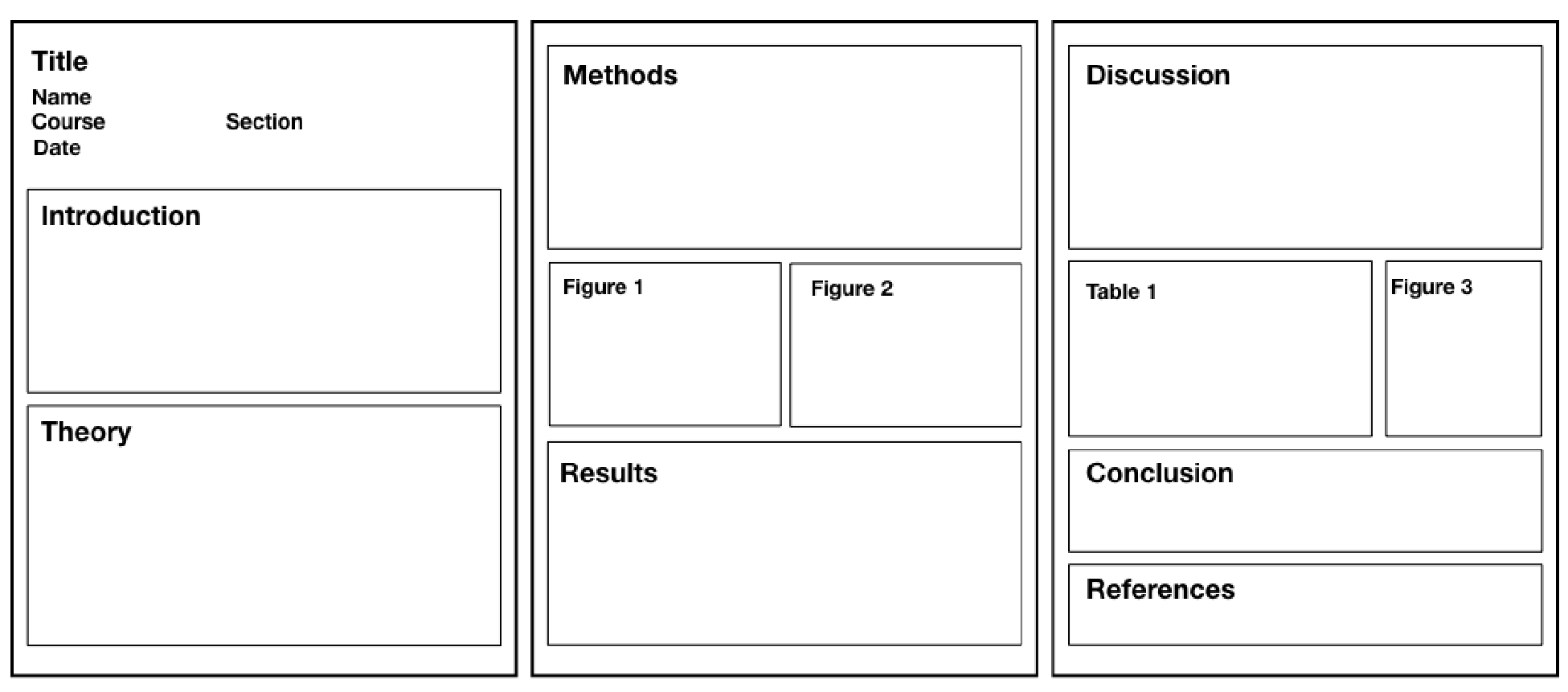5. Writing a good lab report
The better your lab notebook, the easiest it will be to write your lab report. In fact, electronic files in an ELN can be directly used as a first version of a lab report.
5.1 General structure of a lab report
A lab report gives detailed information on the experiment’s background, the conditions under which the experiment was performed and presents the result with a detailed discussion of its implication. The purpose of the report is reflected in its structure. The following is a summary of the basic skeleton structure.
Introduction. The introduction of a lab report should give selected background information about the topic of your study, and naturally lead to a formulation of the motivations for the question that your study is trying to answer. If you are testing a particular hypothesis, it should be clearly stated in your introduction.
Theory. If there is an existing model or a theory that is relevant to the understanding of your study, include a theory section to briefly describe it. This is the place where formulas used for the analysis of your data should be found.
Methods. The trick here is to be both thorough (including all important experimental details such that someone could repeat your experiments) and concise (not including too many details). Some key questions that should be answered in this section are: What was the experimental setup? What reagents were used? What parameters were measured? How was the experiment conducted? How was the data analyzed? A good method section will explain the reason behind the described experimental choices.
Results. The result section will usually be organized around some figures and or tables presenting the result of your measurements. It should include a very brief mention (if necessary referring to the the Theory and Method sections) of the data collection and analysis procedure, and a brief description of the results (referring to eventual figures and tables).
Discussion and conclusion. In this section, you should compare your results to the predictions derived from your hypothesis (theoretical predictions), and/or to literature values if similar measurements have already been published. Do the values you measured fall within error range of the expected value, and if not, what could be the reason? What are the broader implications of your results? What improvements could be made to the experimental procedure, or what future experiments could be carried out?
References. Remember to give credit where it is due, by citing any document that is relevant to your lab report (e.g. published experimental protocols, research papers, websites).
Depending on the context or type of experiment, the above structure can be slightly modified, but its overall logic should be observed.
5.2 Form
Clarity. The first goal of scientific communication is… communication. So first of all, aim to be understood. Write short sentences whenever possible, and make sure you do your best with grammar and spelling.
Concision. Including a large amount of information is not always the best approach. Instead, focus on the points you want to get across. (Placing emphasis on a concise writeup, however, does not justify using bullet points!). For this class, you will be asked to write very short lab reports, with a length of about 3 or 4 pages, and a structure resembling that shown in Fig. 1.

Figure 1: General structure and desired length of the lab reports to be written for this course. Some sections (e.g. theory, references) might be omitted in some cases, and your report can be longer if necessary.
Figures and Tables. Tables and figures are probably the single most important part of a lab report. They are the first thing a reader’s eyes will be drawn to (and unfortunately sometimes the only thing a reader will actually look at!). They should therefore convey all the crucial information you want to get across. They also serve as a tool to aid one’s reasoning. For all these reasons, you should spend time making sure your figures and tables are perfect. For figures, this means including (when appropriate) things like axis labels (but no title), error bars, regression lines or fits, scale bars, and using symbols and colours in a careful way. For tables, think about errors and significant digits. Both figures and tables should have short captions explaining their content, and should be referenced in the text (they should never stand alone).
